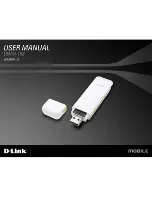
14–Data Center Bridging (DCB)
Configuring DCB
171
83840-546-00 E
Configuring DCB
By default, DCB is enabled on QLogic 8400/3400 Series DCB-compatible C-NICs.
DCB configuration is rarely required, as the default configuration should satisfy
most scenarios. DCB parameters can be configured using the QCC GUI.
DCB Conditions
The following is a list of conditions that allow DCB technology to function on the
network.
If DCB is enabled on the interface, DCBX is automatically enabled and
carried out automatically once a link is established.
If DCBX fails to synchronize with a compatible peer, the adapter will
automatically fall back to default NIC behavior (no priority tagging, no PFC,
no ETS).
By default, the port will advertise itself as willing, and as such, will accept all
DCB settings as advertised by the switch.
If PFC is operational, PFC settings supersede link level flow control settings.
If PFC is not operational, link level flow control settings prevail.
In NIC Partitioned enabled configurations, ETS (if operational) overrides the
Bandwidth Weights assigned to each function. Transmission selection
weights are per protocol per ETS settings instead. Maximum bandwidths per
PF are still honored in the presence of ETS.
In the absence of an iSCSI or FCoE application TLV advertised through the
DCBX peer, the adapter will use the settings taken from the local Admin
MIB.
NOTE
FCoE operation depends on successful VLAN discovery. All switches that
support FCoE support VLAN discovery, but some switches may require
specific configuration. Refer to the switch configuration guides for
information on how to configure a port for successful VLAN discovery.
Summary of Contents for FastLinQ 3400 Series
Page 286: ......
















































